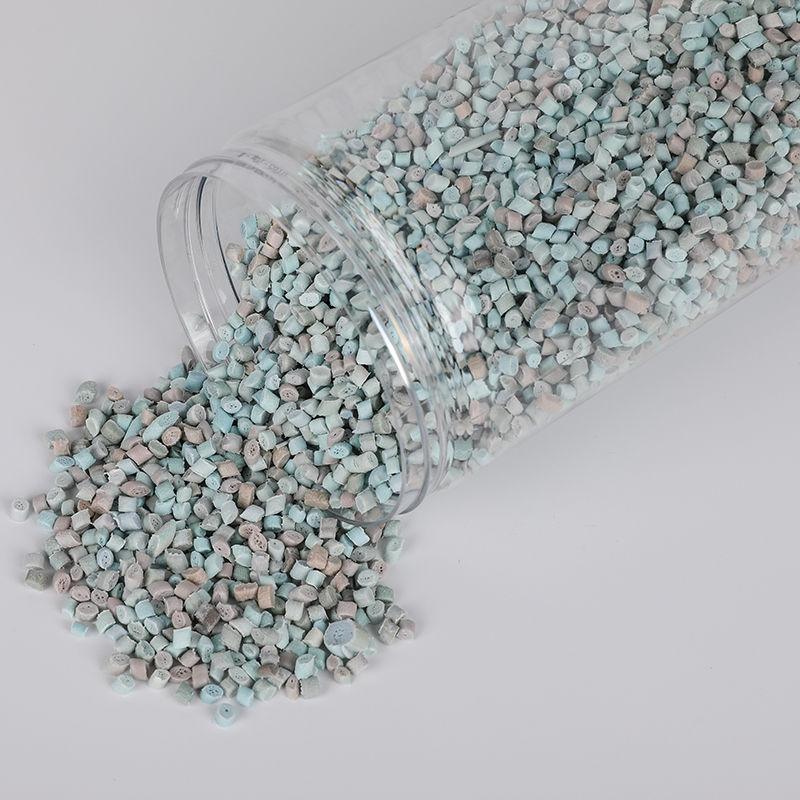Stay up to date with our recent products
Web Menu
Product Search
Exit Menu
Is Recycled Polyethylene Safe for Food Packaging? Regulatory Insights & Practical Use
Recycled Polyethylene (RPE) is increasingly gaining popularity as a sustainable alternative to virgin polyethylene, especially in various consumer products and packaging. As the world strives to reduce plastic waste and embrace a more circular economy, many industries are looking to RPE as a way to incorporate recycled materials into their products. However, when it comes to food packaging, the question arises: Can recycled polyethylene be safely used, or are there regulatory concerns to consider?
In theory, RPE can be used for food packaging, and many manufacturers are already exploring this option. Polyethylene, the base material of RPE, is one of the most widely used plastics in the world. It’s durable, versatile, and relatively inexpensive, which makes it an attractive choice for packaging applications. However, when it comes to using recycled versions of this material for food contact, several critical factors must be addressed, primarily concerning safety and regulatory compliance.
The recycling process for polyethylene involves collecting used plastic items, cleaning and sorting them, and then melting and reforming them into new products. While this process can create material that’s similar in appearance and functionality to virgin polyethylene, the main concern with recycled plastics, particularly in food packaging, lies in the potential contamination during the recycling process. Residues from previous contents, labels, adhesives, or even environmental pollutants may remain in the recycled material, posing a risk to food safety. To mitigate these concerns, the recycling process must be carefully controlled and meet stringent cleaning and purification standards.
Regulatory agencies around the world, such as the U.S. Food and Drug Administration (FDA) and the European Food Safety Authority (EFSA), have established guidelines for the use of recycled materials in food contact applications. These guidelines ensure that the recycled materials do not pose a risk of contamination or migration of harmful substances into food products. For recycled polyethylene, there are specific tests and criteria that need to be met to demonstrate that it is safe for food packaging. These include testing for potential chemical migration and ensuring that the recycled plastic can be used without compromising the quality or safety of the food it contains.

Despite the potential concerns, advancements in recycling technology have made it possible to produce high-quality RPE that can meet these safety standards. Companies employing advanced mechanical and chemical recycling methods can produce recycled polyethylene that is nearly identical to virgin material in terms of purity and performance. These methods help to reduce the risk of contamination and ensure that the recycled material is safe for food packaging. Additionally, food-grade recycled polyethylene is typically sourced from carefully selected, pre-consumer waste streams, which reduces the risk of contaminants compared to post-consumer recycling.
In terms of practicality, the use of RPE in food packaging offers several benefits. It helps reduce the environmental impact by diverting plastic waste from landfills and reducing the need for new raw materials. This aligns with the growing demand from both consumers and businesses for more sustainable packaging solutions. Companies that use RPE in their packaging not only contribute to reducing plastic pollution but also meet the increasing consumer demand for eco-friendly products. For instance, many food companies are now incorporating recycled content into their packaging, including bottles, trays, and wraps, with RPE being a popular choice due to its cost-effectiveness and durability.
However, it's important to note that regulatory approval can vary by region. In some countries, the use of recycled polyethylene in food packaging is more strictly regulated, while in others, it may be less common or subject to specific limitations. For example, in the European Union, recycled polyethylene can be used for food packaging if it complies with the EFSA’s guidelines for food contact materials, while in the U.S., the FDA provides specific regulations for the use of recycled plastics. Each regulatory body requires detailed testing and documentation from manufacturers to ensure that their recycled materials are safe for food contact.
The key takeaway is that while there are regulatory concerns surrounding the use of recycled polyethylene in food packaging, these can be addressed through proper recycling processes, quality control, and adherence to safety standards. As technology improves and recycling practices become more refined, RPE will continue to play a crucial role in sustainable packaging solutions. Ultimately, with careful management and compliance with regulatory guidelines, recycled polyethylene can be a safe, environmentally friendly option for food packaging.
As China PCR Recycled Plastic Granules Factory, We always adhere to the experience and philosophy of "keeping up with the times, constantly innovating, developing efficiently, and cooperating for mutual benefit"

Address: No.11, Wangzhuang Section, Provincial Road 01, Daqiao New Area, Economic Development Zone, Haiyan County, Jiaxing City, Zhejiang Province, China
Phone: +86-18058285678
Fax: +86-0573-86868101
E-mail: [email protected]
SUNRISE GROUP(Overseas Exclusive Agent)
www.sunrisechemical.com
2024 ICIS Global Chemical Distributor Top 8
Export Sales Manager:Helen Zhang
Mob/Whatsapp: +86 19883063465
Email: [email protected]
Copyright © Jiaxing Anyiju Plastic Industry Co., Ltd. All Rights Reserved

 简体中文
简体中文 English
English







